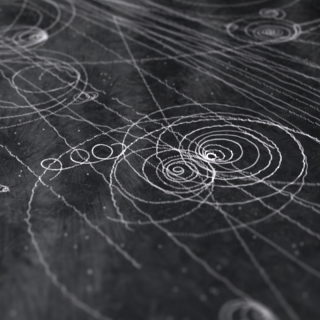In force date
Call year
2018
Investigator
Jorge
Martín Camalich
Financial institution
Financing subprogram
Amount granted to the IAC Consortium
96.800,00 €
Description
| The last decade has witnessed the beginning of the experimental program in the Large Hadron Collider (LHC) at CERN that early on, in 2012, reached one of its major milestones with the discovery of the Higgs. This favors a simple mechanism for the electroweak symmetry breaking (EWSB) which, combined with the absence of other new particles, confirms the validity of the Standard Model (SM) of particle physics at length scales all the way down to attometers or less. On the other hand, fundamental questions such as the specific nature of Dark Matter, or related to the values, hierarchies and quantum stability of the parameters of the SM (masses and couplings) remain, so far, unsolved. Any satisfactory answer to these puzzles requires expanding the framework of the SM with new physics (NP). Besides the LHC, which will be operative for the next two decades, with searches of NP at high pT by the ATLAS and CMS experiments and in flavor transitions mainly by the LHCb experiment, the Super B-factory Belle II at KEK has gone online in 2018 with an ambitious program in flavor physics. Furthermore, many other laboratories around the globe carry out high-precision measurements with tau leptons (Belle II, LHCb, ...), muons (g-2 experiments at FNAL and J-PARC, PSI, ...), kaons and hyperons (LHCb, NA62, KOTO, ...), charm hadrons (LHCb, Belle II and BES-III) and neutron and nuclear decays. The data set that will be collected will allow for a multi-prong strategy to rule out or discover and characterize any putative NP with scales in the multi-TeV range. The goals of the current proposal are connected to the phenomenology of this global experimental effort and it involves three layers of scientific inquiry. The bottom tier focuses on the analysis of the low-energy data and corresponding SM predictions in flavor physics. The aim is, first, to investigate promising channels and new observables that can be measured and reliably predicted. Secondly, we will monitor relevant experimental data to perform global fits to NP models taking into account, conservatively, the theoretical uncertainties of the SM predictions. In the intermediate tier we focus on the correlation between the low-energy and the LHC data. This involves the investigation of the potential of a high pT flavor-physics program and its complementarity with the low-energy measurements. In the top-tier we focus on model-building in a bottom-up spirit. First, we design models which account for significant anomalies and that are not in conflict with all other experimental data. Secondly, we will investigate the potential of these models to provide elegant frameworks to address fundamental questions in Particle Physics and Cosmology, such as the origin of flavor, the nature of the EWSB scale, the nature of Dark Matter, baryogenesis, etc. This proposal is meant to be developed in 4 years. It involves J. Martin Camalich as IP and a selection of excellent external collaborators that will contribute to specific aspects of the proposal. Development to its full potential requires a post-doctoral researcher for 3 years, one PhD student and a budget to cover their travels and visits from the external collaborators. Successful funding of the proposal would provide the basic structure for a new group focused on Particle Physics at the IAC in Tenerife. |
Related documents
Related projects

Astroparticle Theory
Our group works on theoretical astroparticle physics and our goal is to expand our understanding of the fundamental laws of Nature by exploiting the synergies between astrophysical observations and laboratory experiments. Different lines we are currently working on are: Indirect searches of dark matter: New light exotic particles coupled very
Jorge
Martín Camalich


